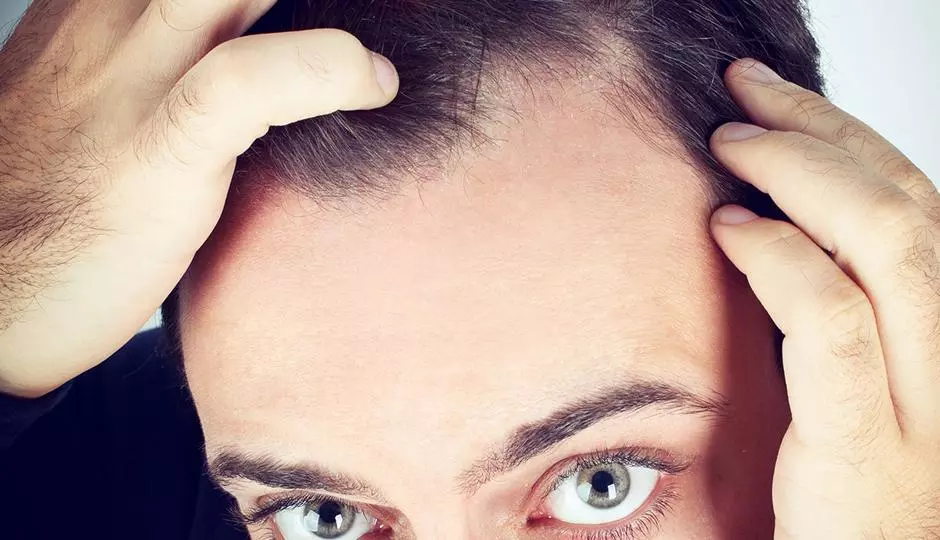Alopecia is the medical term for hair loss and there are several common variations. Here at HT&RC, Dr. Arthur Gray uses the medical diagnostic approach to precisely determine the type of alopecia in each individual case as well as the most effective treatment or combination of advanced hair restoration techniques for each individual.
For the millions of men and women experiencing hair loss, a basic understanding of the various common types of alopecia can be very helpful when it's time to consider the cutting-edge technologies and modern hair restoration procedures available today. Fortunately, the days of having to accept hair loss as an inevitable fact of life are now behind us. HT&RC provides a wide range of surgical, non-surgical, and topical hair solutions for fostering healthy hair follicles and restoring hair.
Androgenetic Alopecia
The term androgenetic alopecia is more commonly known as pattern baldness. This is the most common type of hair loss in men, and affects about 50% of Caucasian men by age 50 and affects 3% of women between the ages of 20-29, and 29% of women from 70-89 years old. The male sex hormone testosterone is classified as an androgen and because the condition also depends on genetics, thus the term "androgenetic". Testosterone is the source of the derivative hormone DHT, dihydrotestosterone, which is the true culprit causing hair loss in those experiencing androgenetic alopecia. However, since genetics are also involved, the DHT only affects those follicles that are genetically predisposed to being sensitive to the DHT.
Men with androgenetic alopecia have hair follicles that are highly sensitive to DHT, which disrupts the follicles' natural growth cycle. This results is a much shortened anagen phase of the growth cycle which then results in shorter, thinner hair shafts which is a process called miniaturization. Hair loss tends to begin above the temples in a well-defined pattern, spreading over time with thinning also occurring at the crown. The progression of hair loss is well documented in the Hamilton-Norwood Scale.
Alopecia Areata
The condition alopecia areata is characterized by hair falling out in patches, rather than the well-defined pattern baldness of androgenetic alopecia. The condition is an autoimmune disorder which causes the body's immune system to mistakenly attack the hair follicles. This is thought to be T-cell mediated peribulbar inflammation leading to the disruption of the normal hair cycle. Unlike the cicatricial alopecia, the alopecia areata does not lead to permanent destruction of hair follicles and permanent hair loss. Hair loss with Alopecia Areata can be rapid and unpredictable. The association of alopecia areata with thyroiditis and vitiligo suggests and autoimmune etiology to the disorder.
Scarring Alopecia (Cicatricial Alopecia)
This type of alopecia, also known as cicatricial alopecia, is caused by inflammation around the bulge of the hair follicle. The condition causes damage to hair roots and follicles are replaced by scar tissue. Balding areas differ from alopecia areata, appearing to be more ragged around the edges. Scarring alopecia may present symptoms such as itching, burning, and pain, and hair loss may progress quickly.
Traction Alopecia
This condition is the answer to the frequently asked question "Is your hairstyle causing your hair loss?" As its name suggests traction alopecia is caused by repeated pulling on the hair. Tight buns, ponytails, and braids can all trigger traction alopecia especially if heat and chemicals are also used for hair styling. Hair loss along the hairline is the primary characteristic of traction alopecia. The first step to treatment is to refrain from any style which pulls at the hair and causes follicle stress.
Hair Restoration Solutions at HT&RC
Once the various types of alopecia are understood we can see that optimizing hair follicle health is the key to maintaining healthy hair and even stopping or reversing hair loss. At HT&RC we have advanced non-surgical technologies available to foster healthy hair follicles. Advanced laser therapy is a proven FDA approved method which can be used in the comfort and privacy of your own home.
Both of the proven techniques above are frequently used as stand-alone treatments but their healing characteristics are so pronounced that Dr. Gray also uses them to enhance recovery and new hair growth after surgical hair replacement procedures such as Follicular Unit Extraction and Follicular Unit Transplant.
Regardless of which type of hair loss you are experiencing, the first step to finding a solution that’s right for you is a private consultation with our founder Dr. Arthur Gray. As a member of the distinguished International Society of Hair Restoration Surgery (ISHRS), Dr. Gray has the artistic eye and steady hand for the meticulous precision required for hair transplant procedures. He's also made it a priority to offer the full spectrum of proven non-surgical and topical hair restoration and replacement solutions. Contact us for a consultation to get started today!






